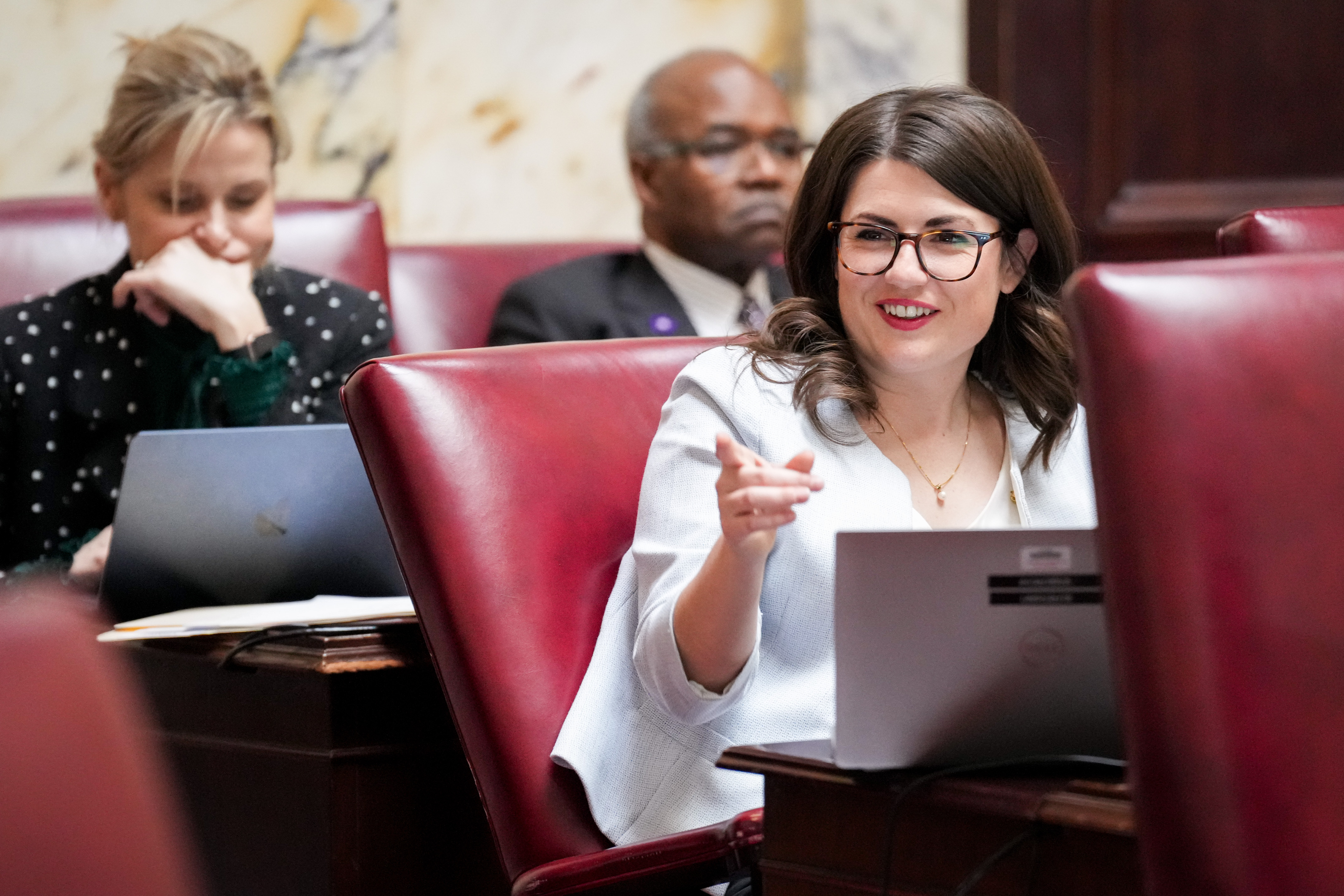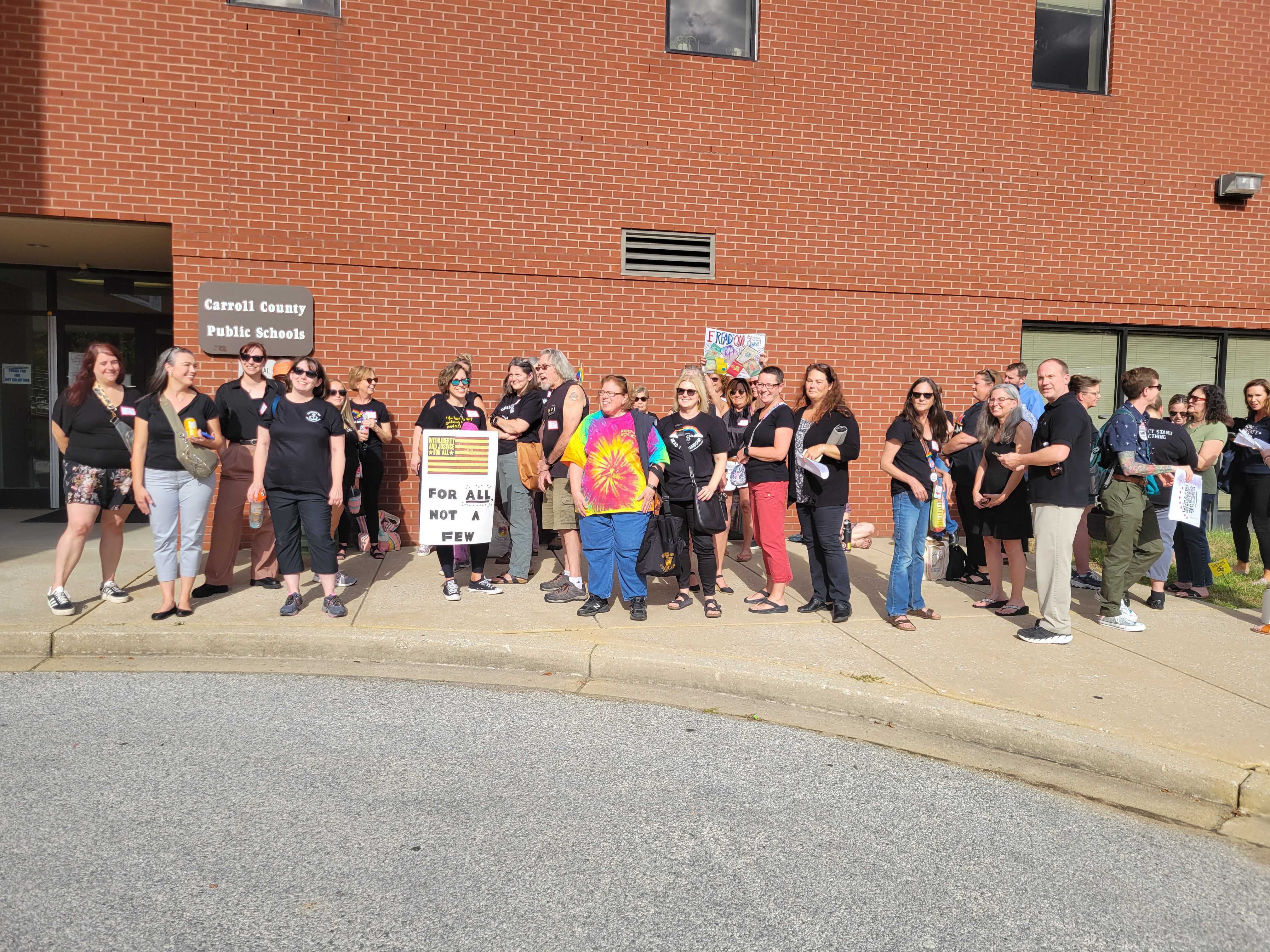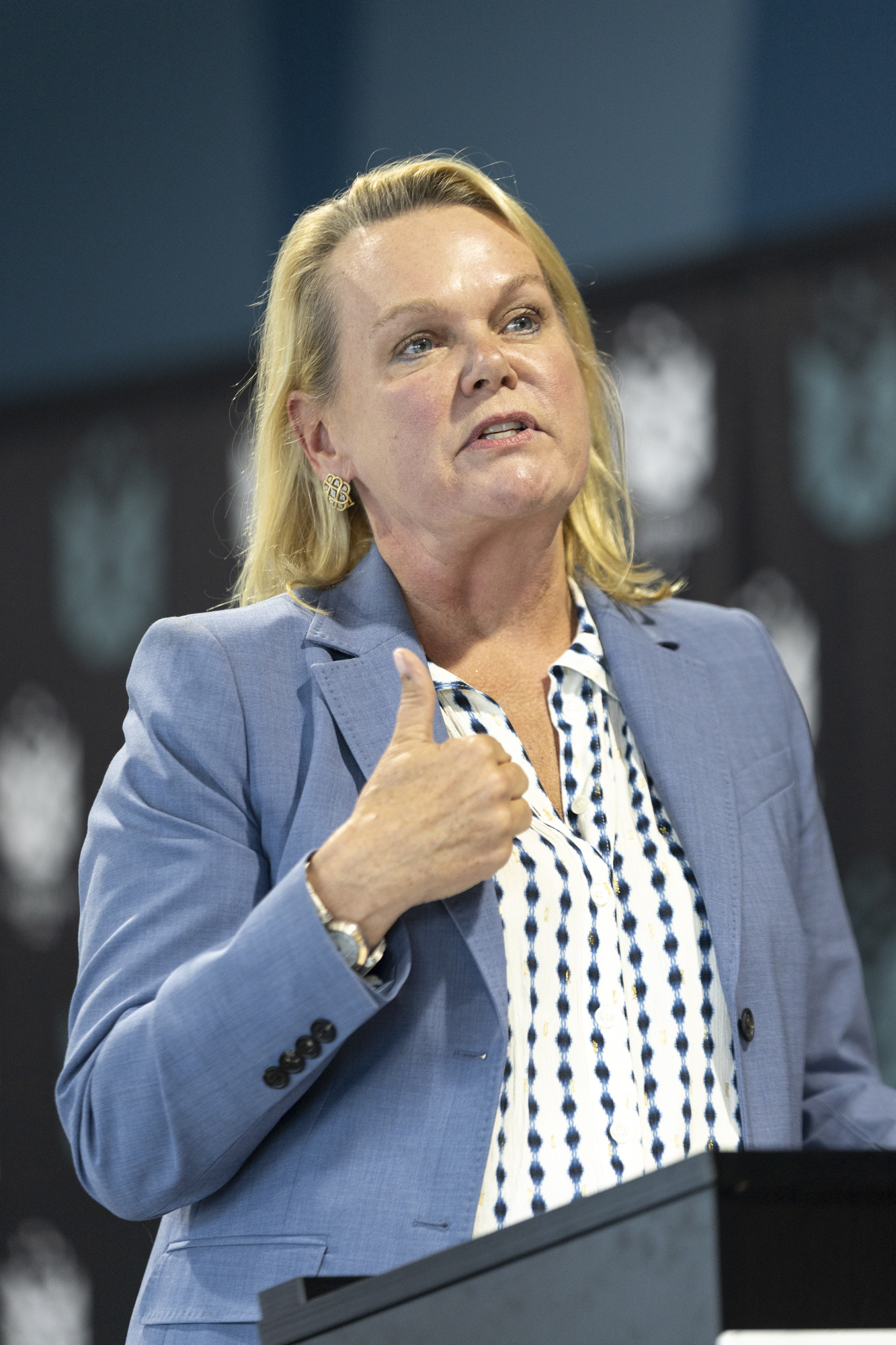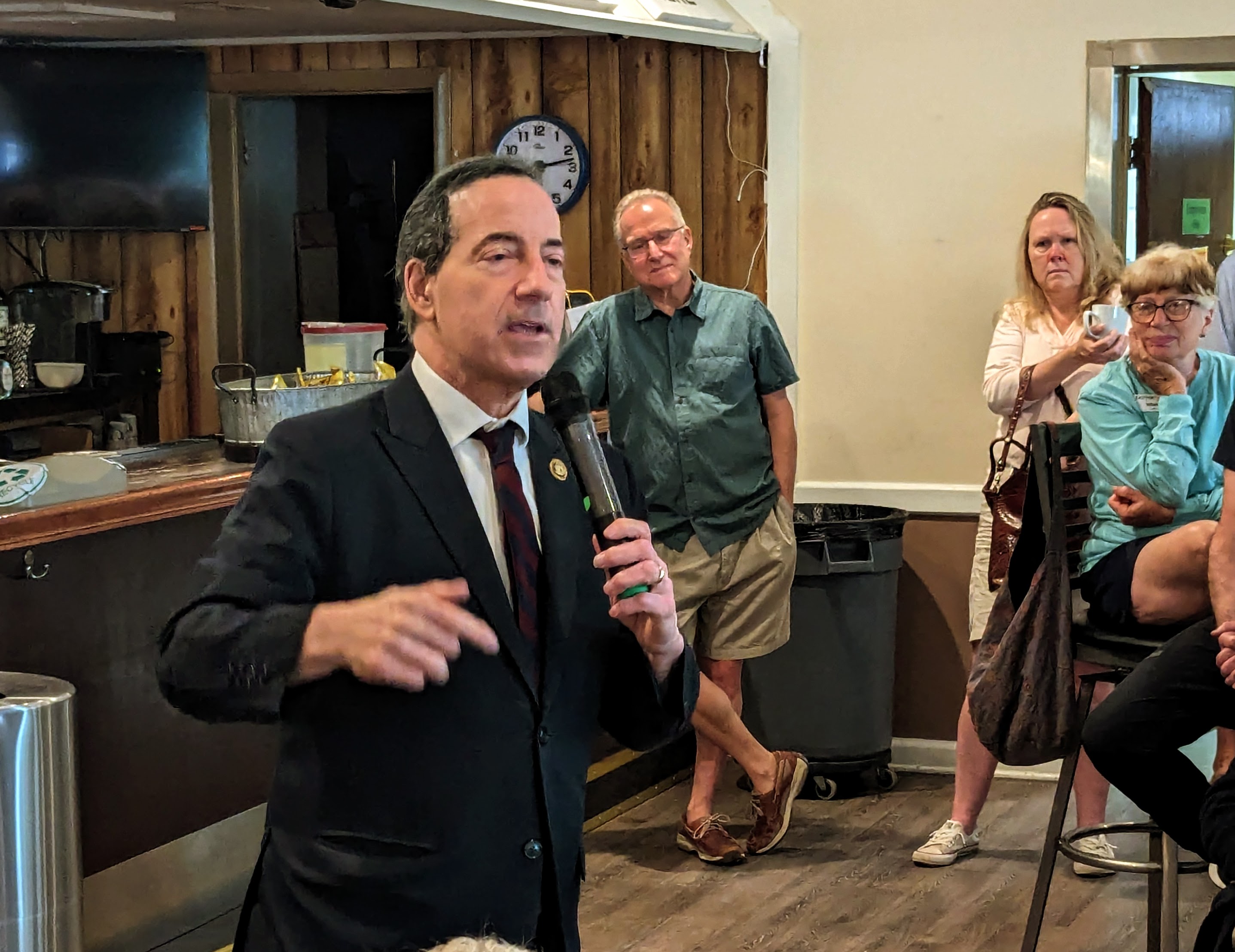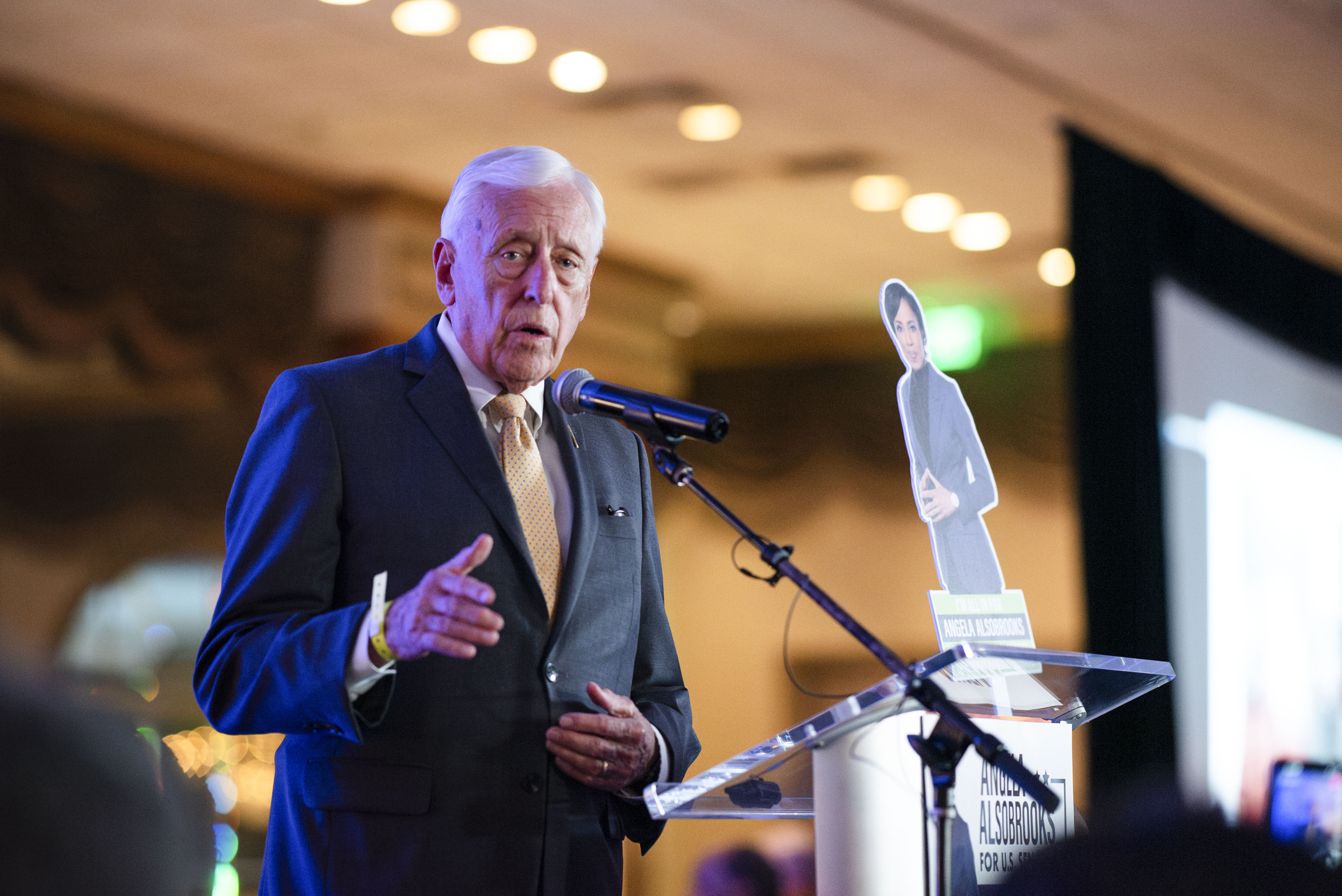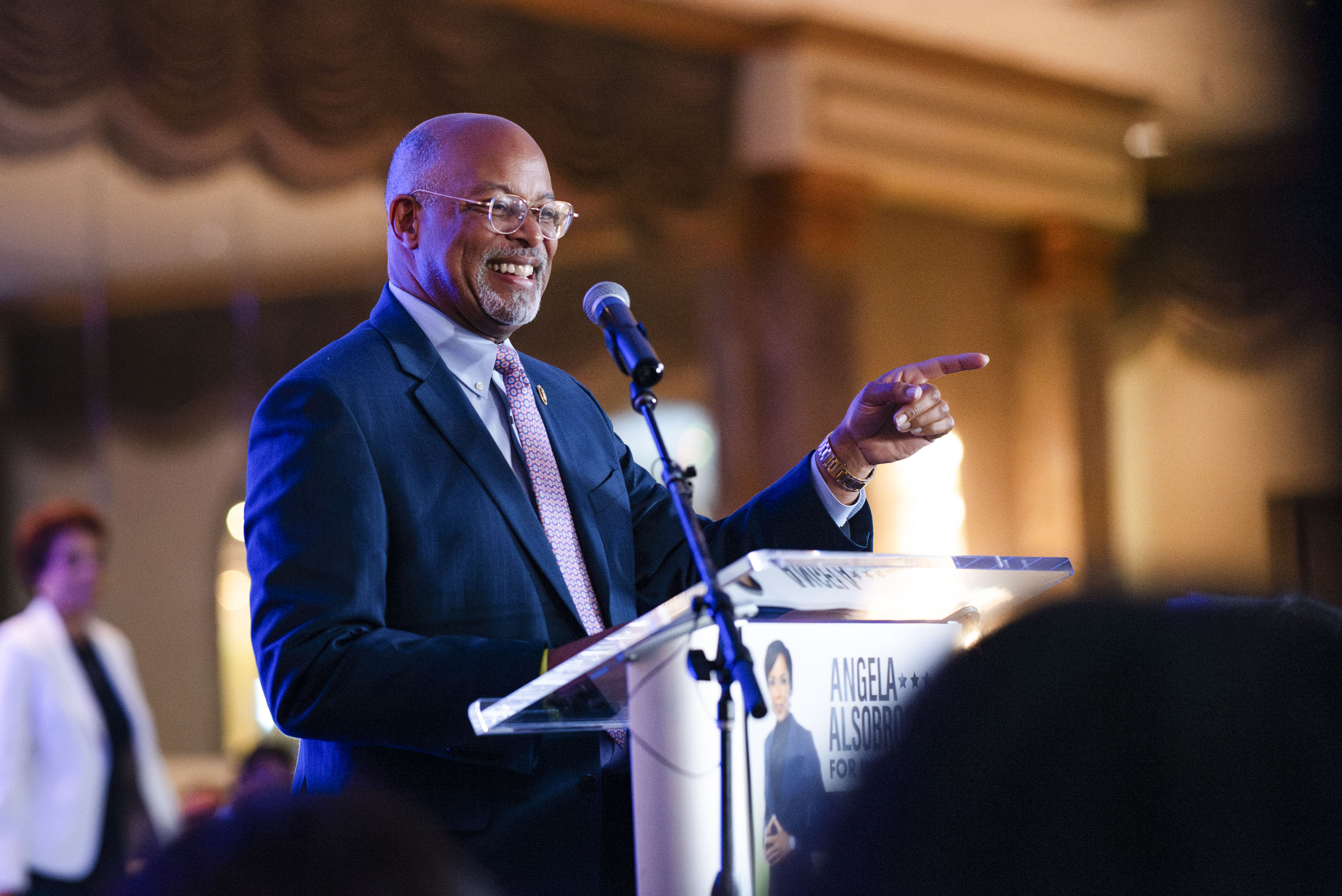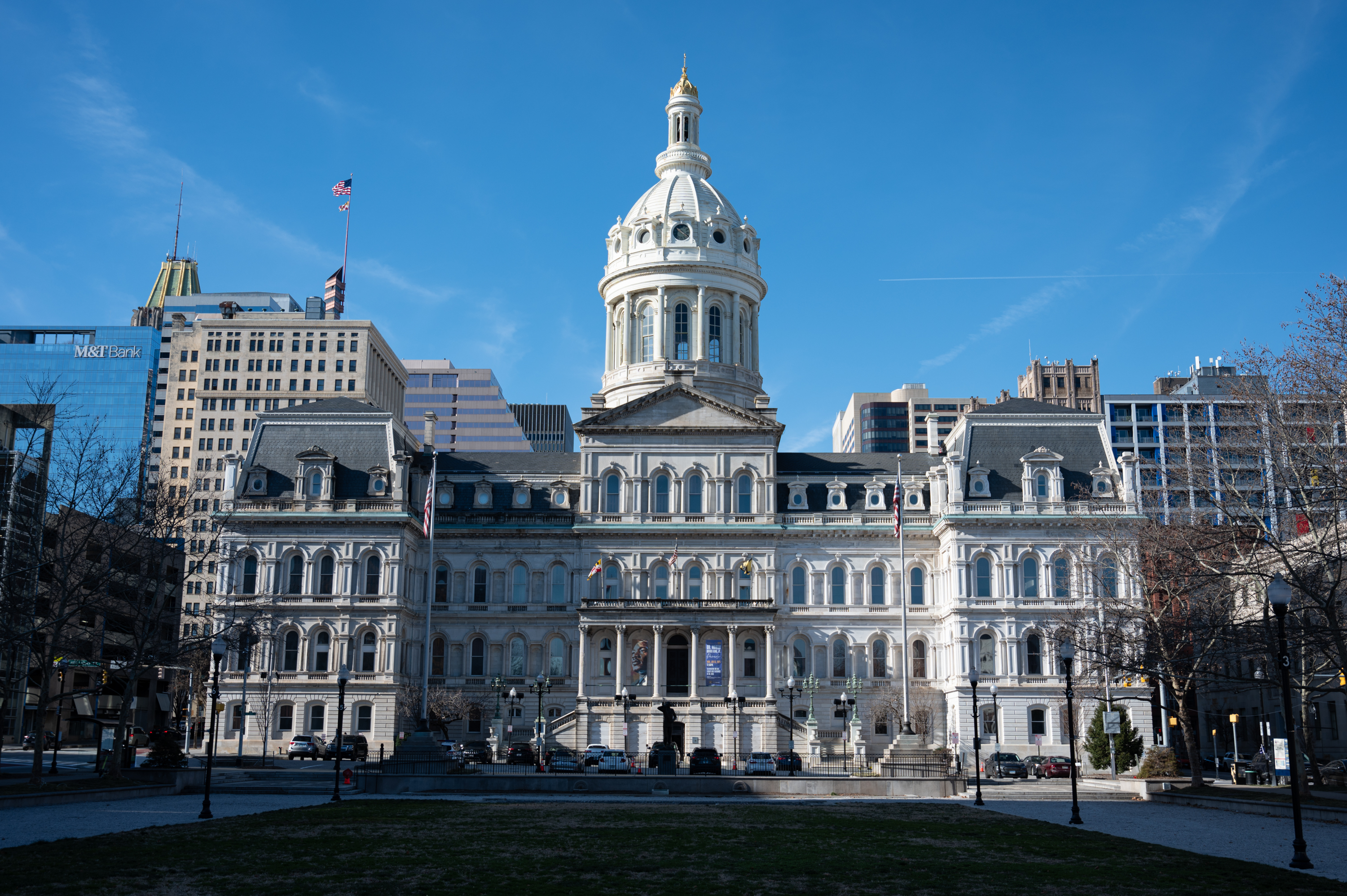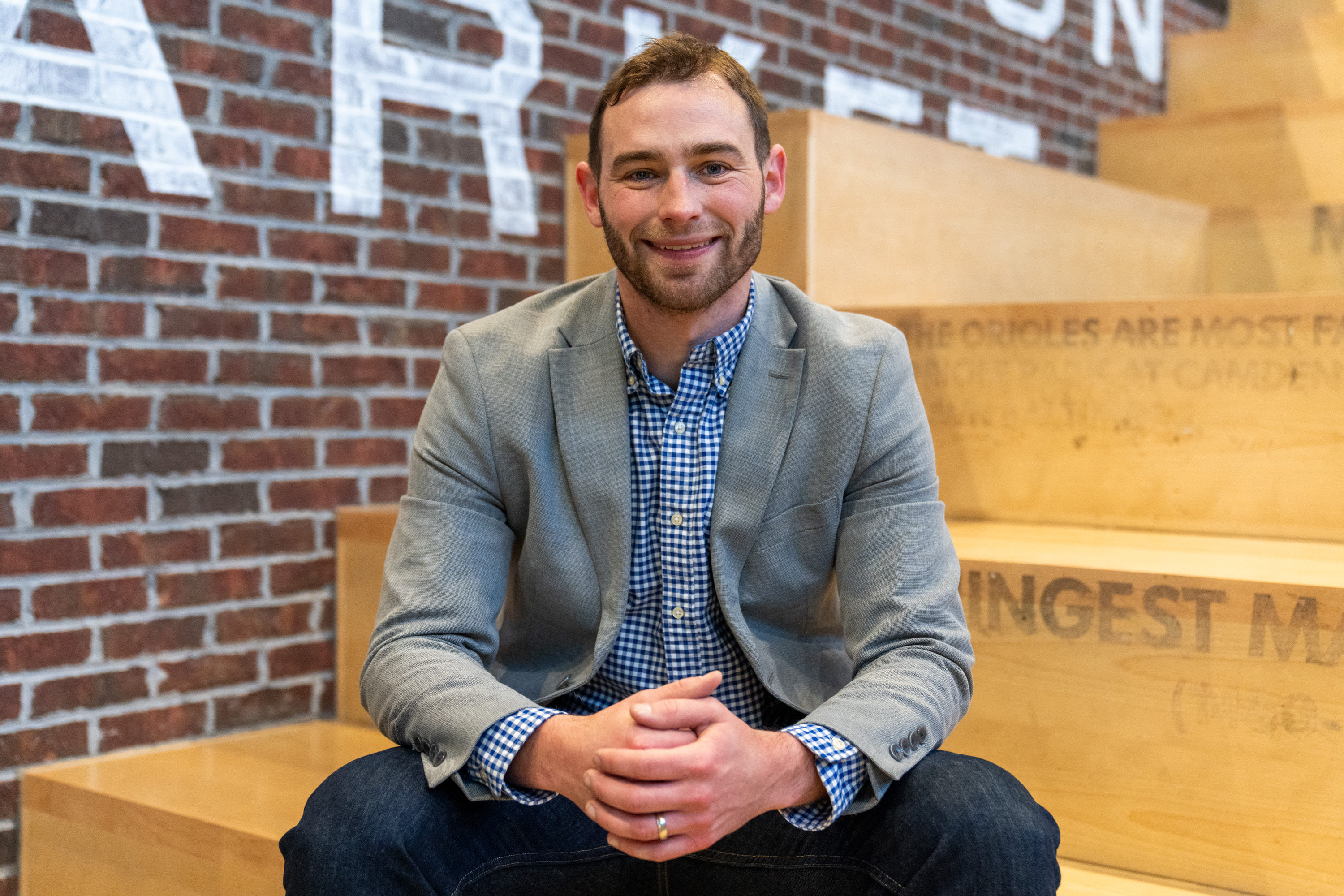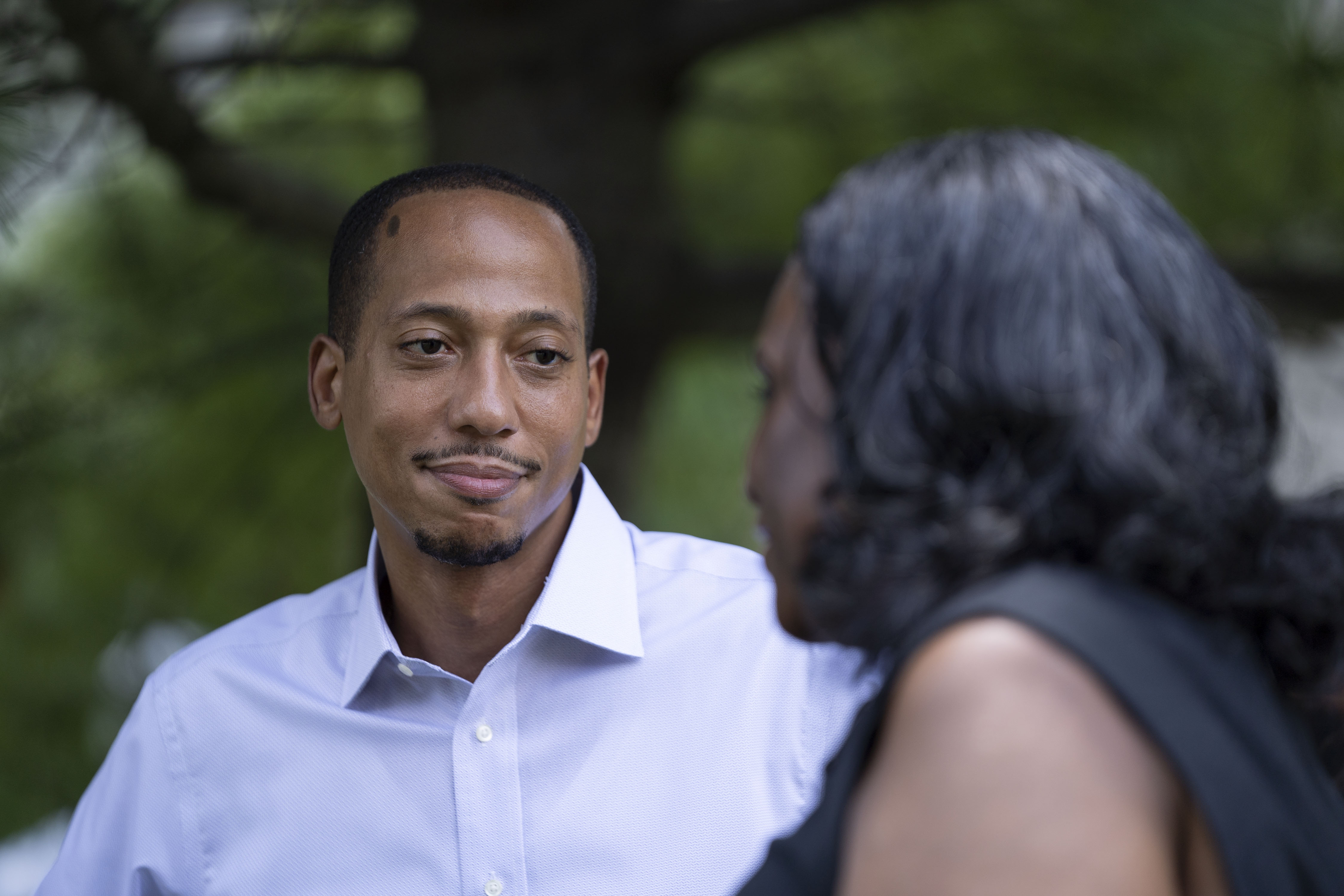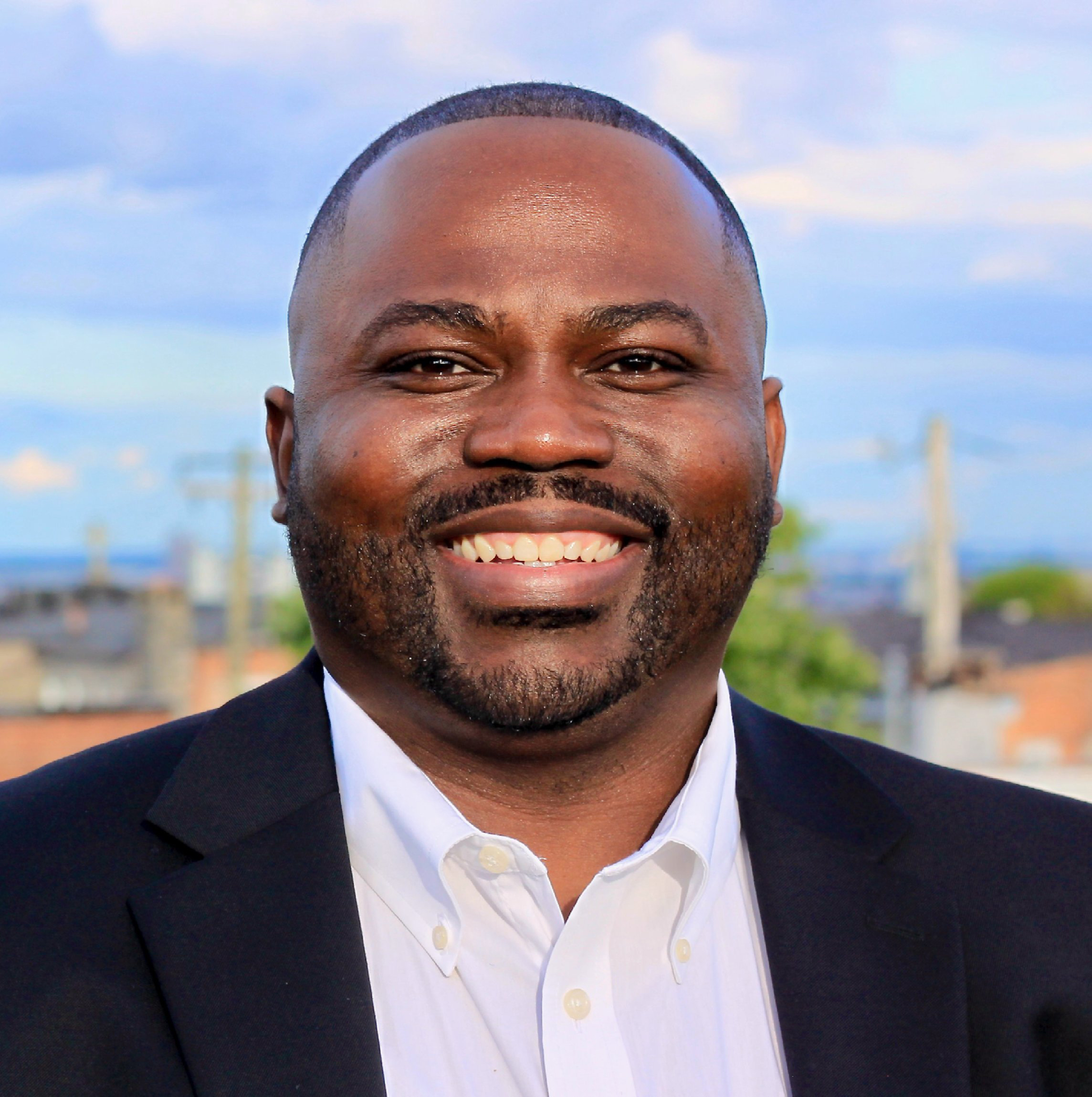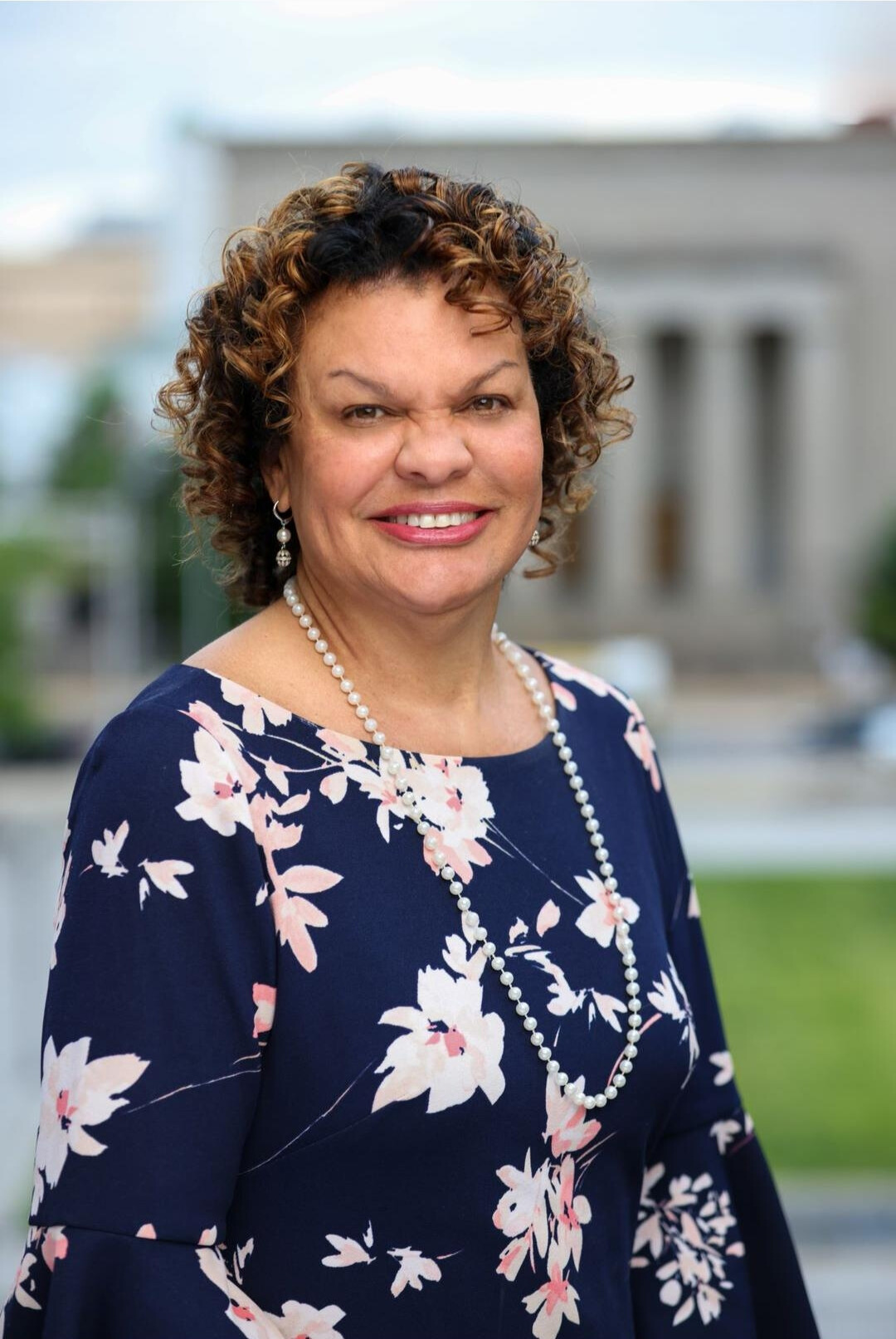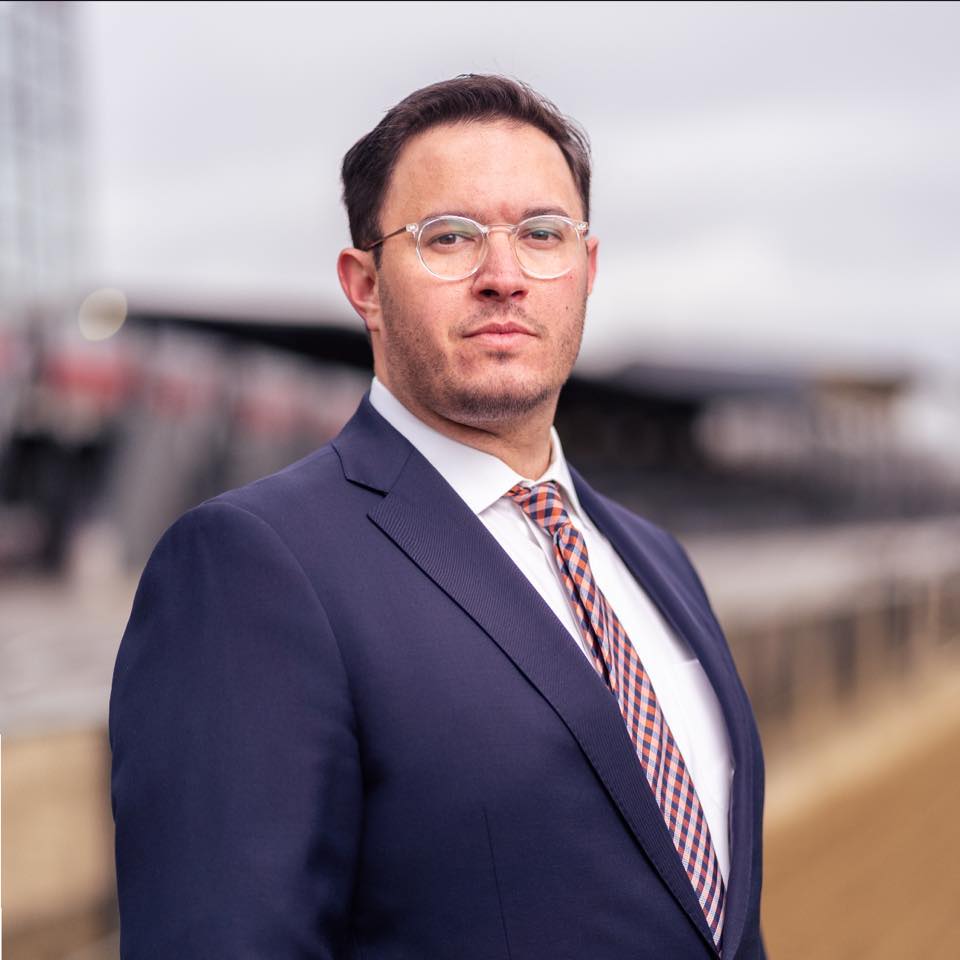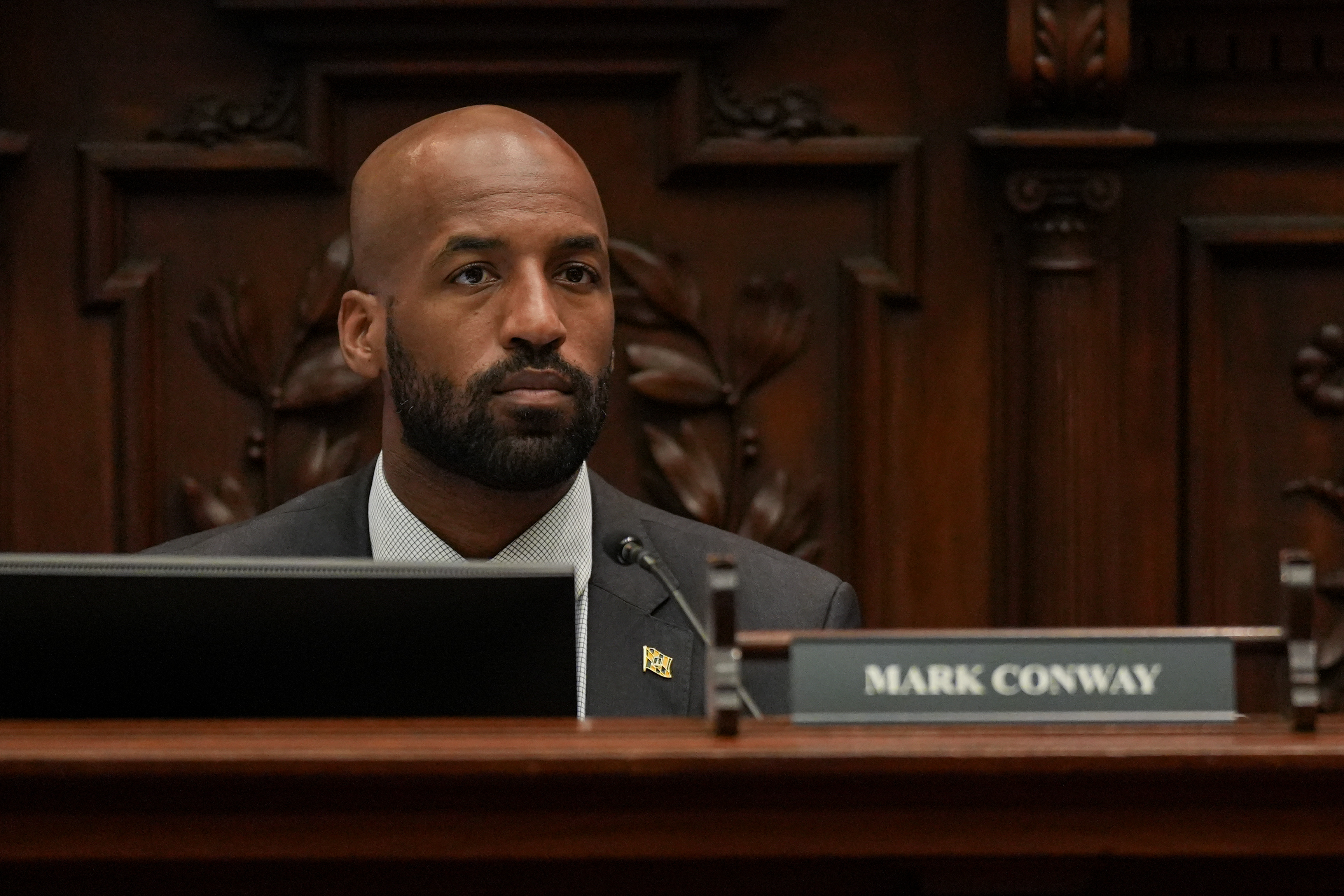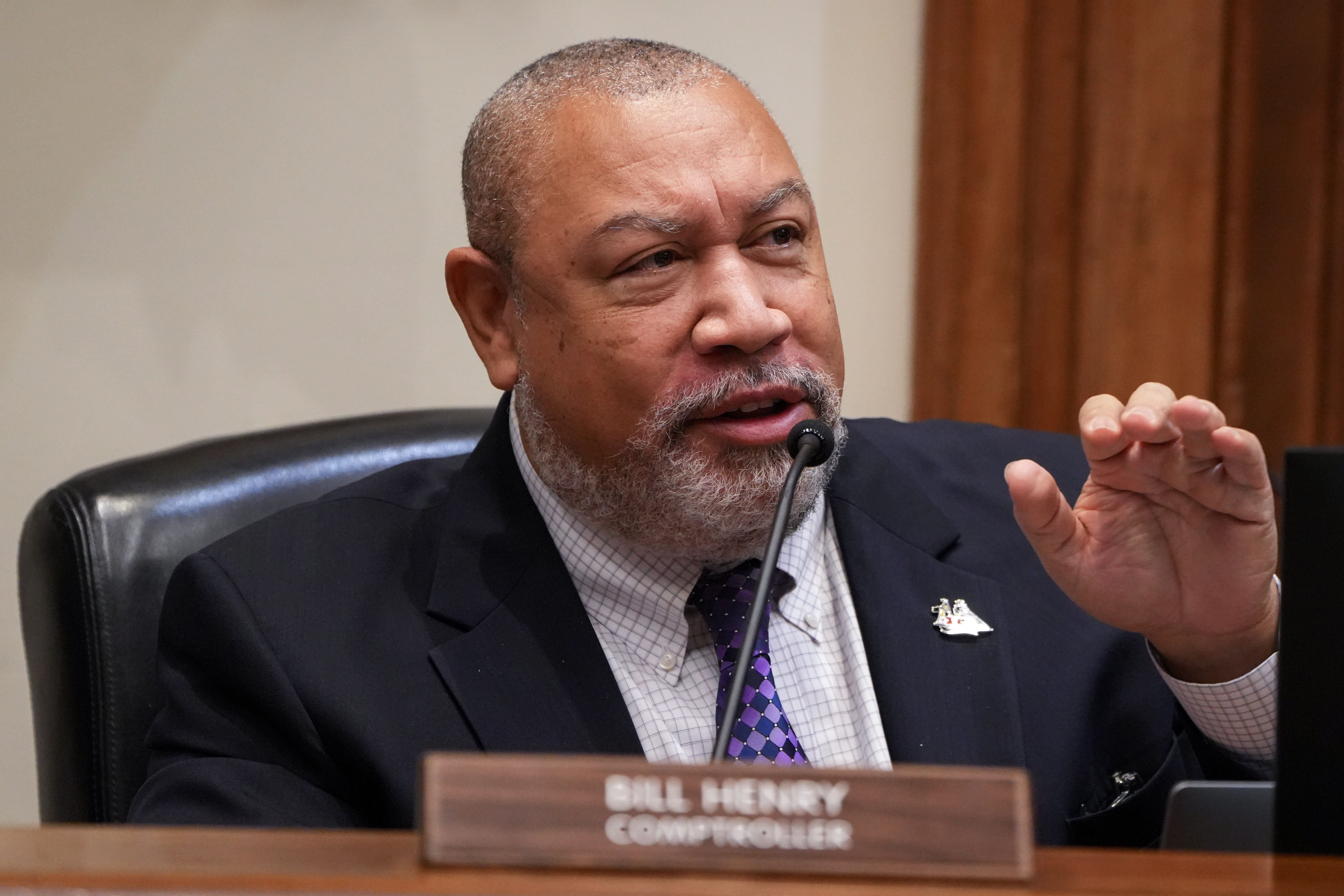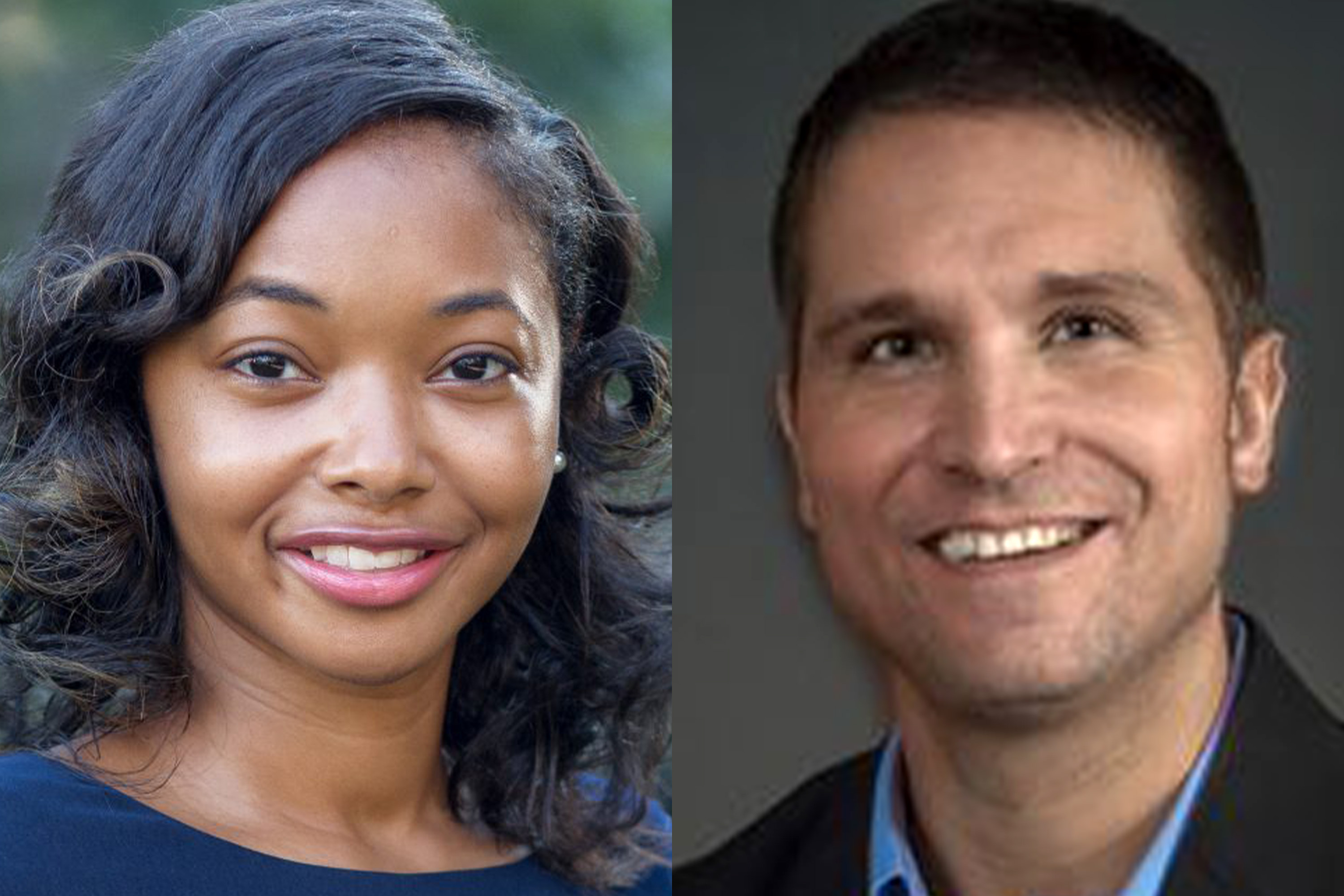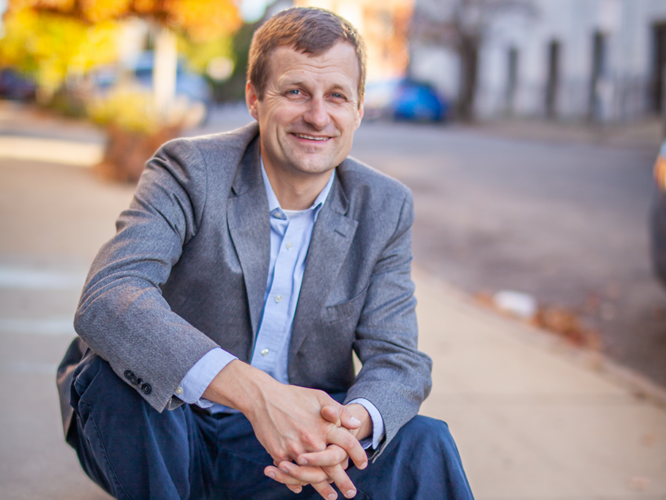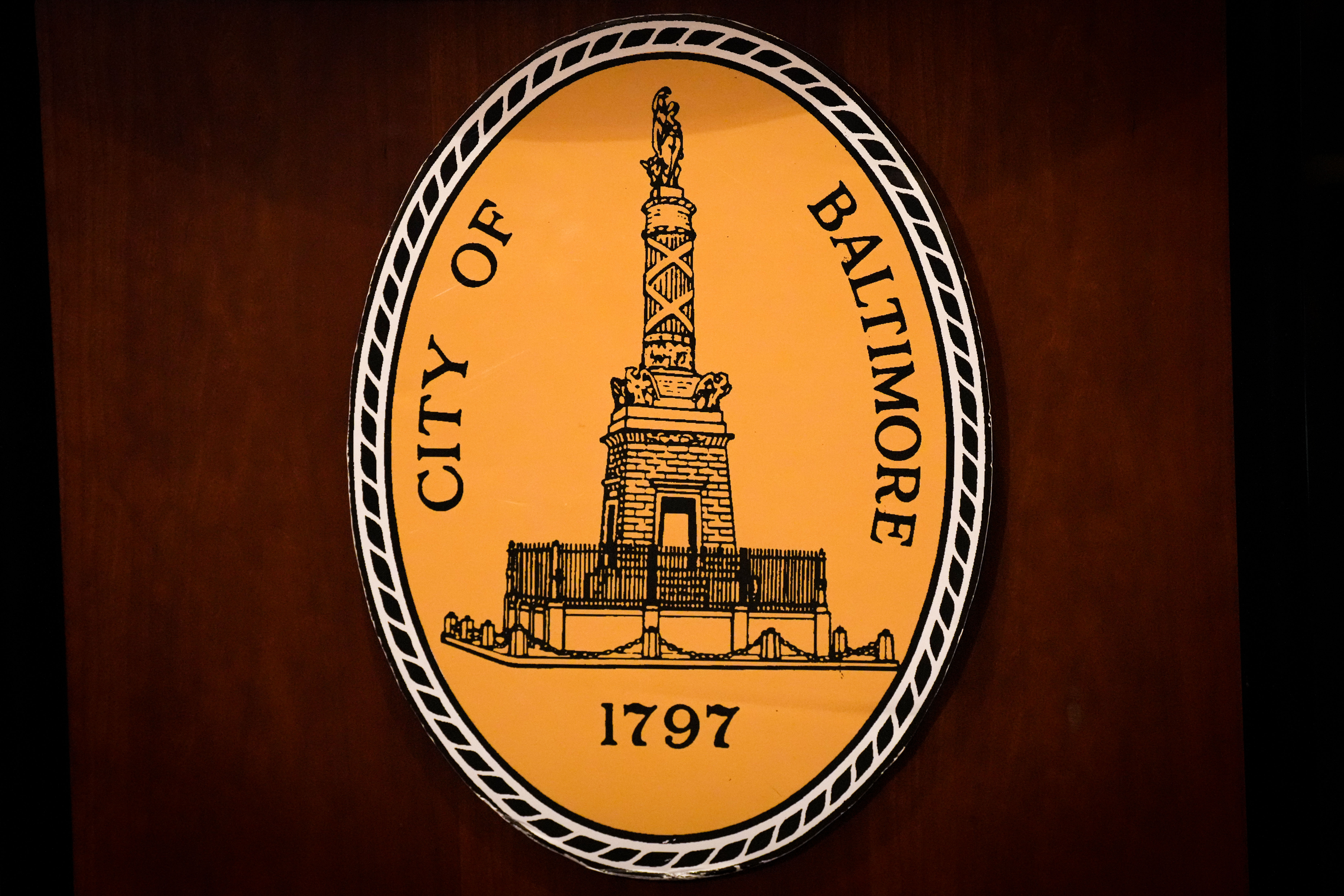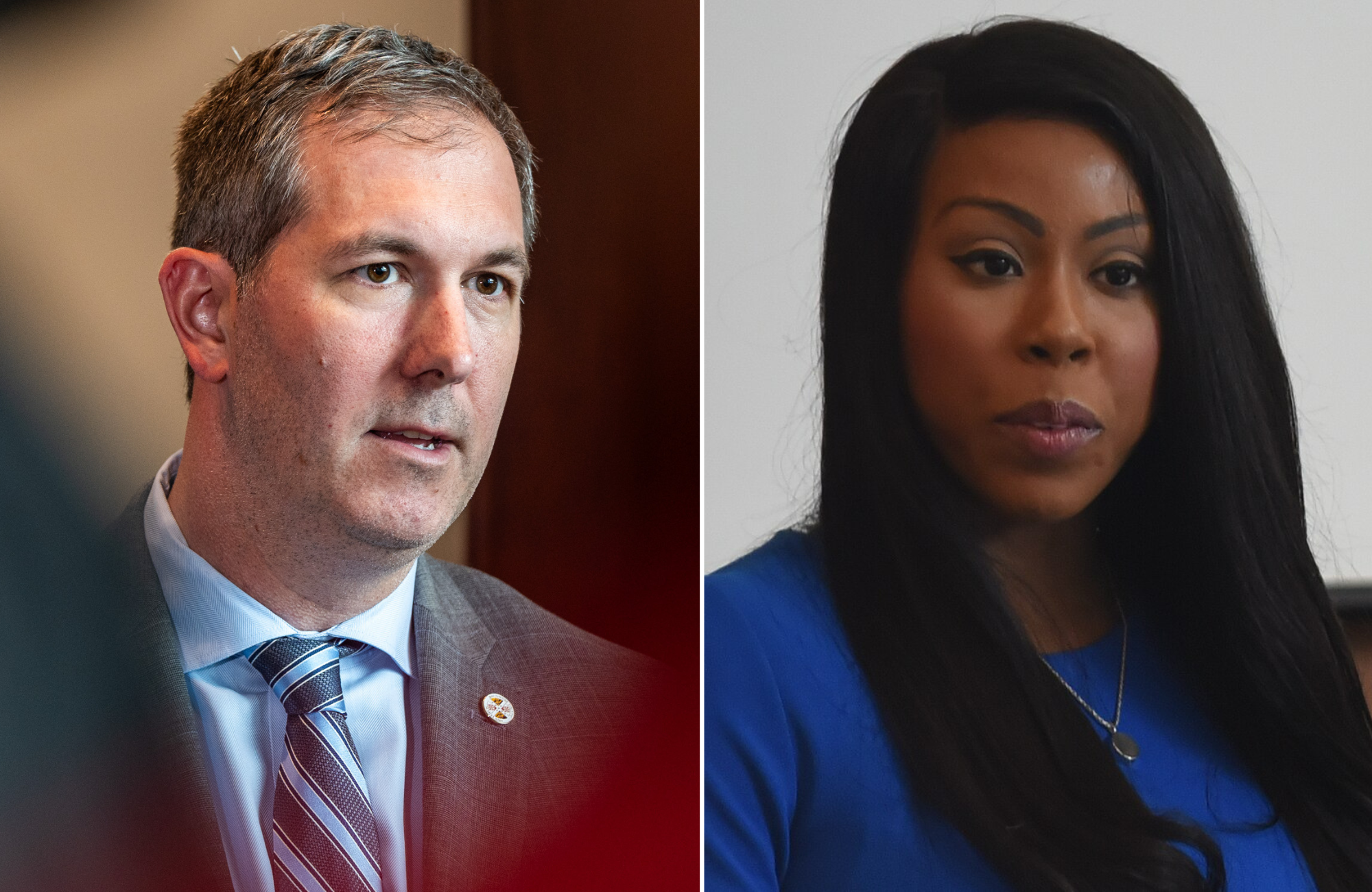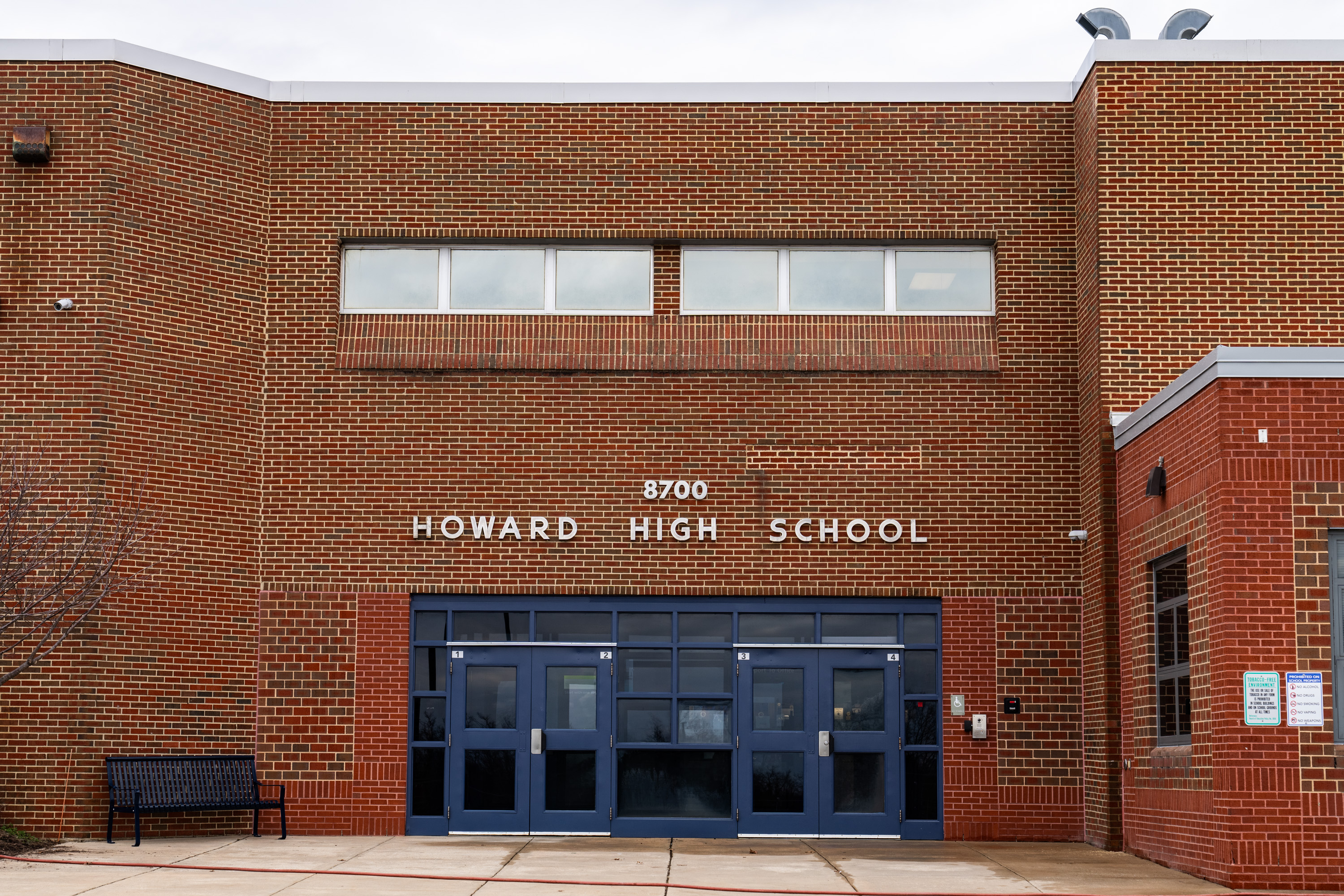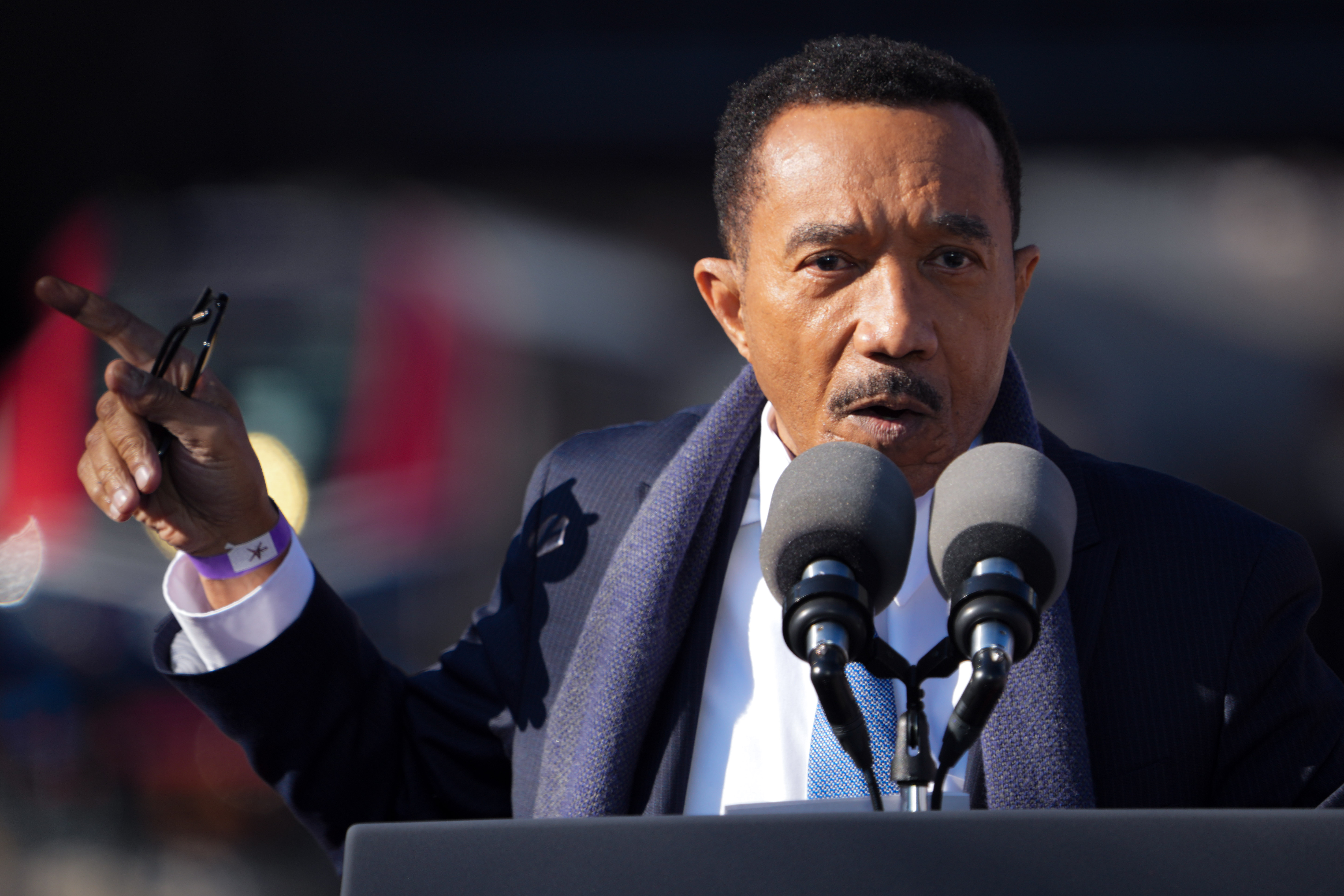What’s the job: Representing residents on the 15-member City Council, including introducing and voting on legislation, approving city spending and providing oversight of city operations. Council members are elected to four-year terms by district. The 1st District includes Southeast Baltimore neighborhoods such as Fells Point, Canton, Patterson Park, Greektown and O’Donnell Heights.
Look up your City Council district here.
Democrat
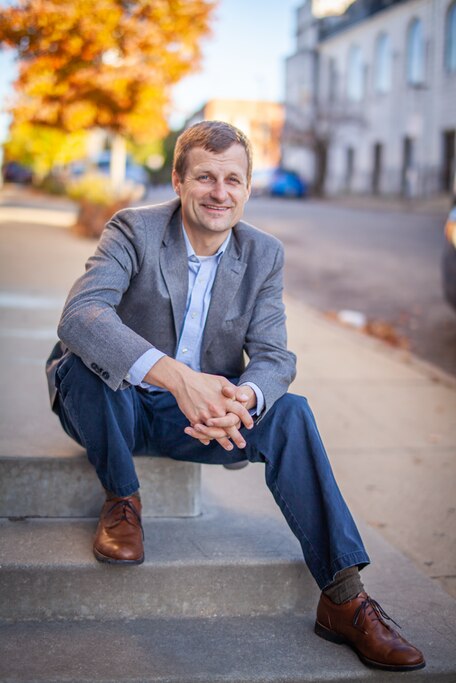
Name: Mark Parker
Age: 42
Personal: Married, with two children.
Education: Bachelor’s degree, history and government and politics, University of Maryland, College Park; master’s degree, divinity, United Lutheran Seminary; master’s degree, nonprofit management, University of Baltimore.
Experience: Pastor, Breath of God Lutheran Church (15 years); chaplain, University of Maryland Medical Center; Boards of Directors: Southeast Community Development Corporation, The Highlandtown Preschool, the Clinton Street Community Center, the Highlandtown Community Association, the Exchange Club of Highlandtown & Canton, the Hispanic Commission of the City of Baltimore.
Endorsements: Baltimore Teachers Union, City Councilman Zeke Cohen (1st District), Comptroller Bill Henry, state Del. Luke Clippinger, Sierra Club, former Councilperson James Kraft, former state Del. Carolyn Krysiak, CASA in Action, Clean Water Action, Progressive Maryland, 32BJ SEUI, Jews United for Justice, AFSCME Maryland.
Notable donors: Comptroller Bill Henry, Franchesca Empandas Café, Zac Blanchard, Josh Fannon, Doug Schmidt.
A: No, I strongly oppose this ballot measure. The case against it is straightforward: fewer districts mean less responsiveness from elected officials and less ability of those elected officials to be engaged on a granular level in community concerns. It also makes running for office more expensive and limits the viability of a community-based campaign. The biggest driver of campaign costs is the size of the universe of voters — in terms of pieces of mail which need to be sent, and the number of doors to be knocked. Cutting down to eight has nothing to do with right-sizing the council (there’s a case to be made for twelve members). Instead, it is a power play by the major donor class in Baltimore. Fewer districts mean fewer candidates running more expensive campaigns, magnifying the power of the donor class. Combine that with the term limit change, and now the donor class has an opportunity to buy a new councilperson every two cycles in each district. First-time candidates trying to build name recognition across a larger district are particularly dependent on major donors who can bundle lots of max donations, as opposed to established and trusted elected officials.
A: On the front end, this is about housing supply. We need more housing to be built, and rebuilt, in different forms and across diverse communities. Growth in housing stock can’t be concentrated in one or two districts and shouldn’t be dominated by one housing type (“luxury” apartments), without significantly skewing the market. Our tax incentives sometimes stoke these distortions (the High-Performance Market-Rate Rental Housing Property Tax Credit, for example, which tilts projects in favor of “luxury”). Incentives can also lead to broader-based investment in renovation across the city (like expanding CHAP credit eligibility and participation to more communities, including those which have experienced disinvestment). On the back end, there are a variety of housing market interventions which introduce and sustain affordability. The new inclusionary housing law holds great promise for introducing long-term affordability in multi-family projects. Low Income Tax Credit projects help to fill gaps in communities and increase density by building affordable rental complexes on currently vacant land. Meanwhile, community land trusts offer a participatory path toward permanent affordability along with community transformation. Finally, expanding homeownership naturally helps affordability, as families build wealth and it does not leave them vulnerable to significant rent increases during times of high inflation.
A: We need to significantly increase city and state investment in residential redevelopment across Baltimore. In many distressed neighborhoods, the acquisition and construction costs for vacant homes are substantially higher than what the property could sell for on the market (the “appraisal gap”). This gap, averaging between $50k and $75k per modest Baltimore rowhouse (depending on the neighborhood), prevents for-profit and non-profit organizations from entering the market. Public funds need to cover the appraisal gap to jump-start vacant redevelopment. Once the market has been stabilized, the subsidy is pulled back and developers will continue to work in the area while also being able to sell properties at a profit. The city needs to streamline the property acquisition and disposition process so that we can gain clear title to vacant homes and dispose of those homes to people who will bring them to a finished state. The city construction permitting process has been maddeningly slow for several years. Each month of delay in completing a renovation significantly increases costs for the owners, and slows down progress generally all across the city. This needs to change. We should institute a new higher tax rate on vacant properties (see my answer to question #5).
Q: Do you support the Harborplace plans as proposed? Please explain your answer.
A: The Harborplace plans would have been better if they had been developed through a robust process of public input (led by City and community leaders, not by the developer) and thorough public review. We had no genuine public engagement process led by our public leaders. And the official review process was rushed and shallow. The level of leadership we have seen from our elected officials on Harborplace has not matched the significance of this property for the future of the city. In short — process matters. Taking shortcuts, or just going through the motions of public engagement and oversight, inherently results in weaker proposals. Strengths include: the expansion of green space and public space; climate resiliency being a key design consideration; more space for public transportation, walking, and cycling; the design, scale, and function of the two commercial buildings along Pratt Street. Weaknesses include: The scale of the residential buildings along Light Street. The absence of the former News American site (parking lot on Pratt Street, also owned by MCB) from the plan. That site would be ideal for a taller residential structure, consistent with the existing scale of development and the master plan for the Inner Harbor.
A: Assuming a positive outcome to legislation being considered in Annapolis, I’ll develop and introduce legislation making use of Baltimore’s new power to institute a higher tax rate for vacant properties. Stabilizing and renewing devastated communities across our city is our highest priority, and vacant properties help drive that devastation. They are key to rebuilding our city. This isn’t about revenue generation. It is intended to promote three outcomes for vacant property: 1) development to a finished state by the current owners; 2) sale of vacant properties to new owners who will bring them up to a finished state; 3) seizure by the city due to unpaid tax bills, allowing the city to dispose of the property into the hands of owners who have the capacity and plan to bring them up to a finished state. Predatory investing from out of town in Baltimore residential communities actively harms our communities and slows down our progress as a city. Predatory investing includes purchasing vacant or marginal properties with no intention or action toward repairing or improving them, but instead to hold them in a state of disrepair until the community improvs enough that the properties could be sold at a major profit.
A: Renew Baltimore’s proposal would be devastating for the city. It is a reckless and dishonest attempt by wealthy individuals to absolve themselves of any sense of shared responsibility for the well-being of their neighbors and of the city overall. It is important that we decrease the property tax rate over time. But that has to happen alongside revenue increases that allow us to make real investments in our communities while also converting some small portion of those revenue increases into property tax relief. There is no legitimate tax-cutting proposal which can operate independently of our budget process. That is to say, a ballot initiative in November which slashes property tax rates while leaving the spending cuts until the next budget cycle in June is irrational, undemocratic, and imprudent. It is just a big lie to voters, promising them massively decreased taxes while avoiding any mention of the consequences for public safety, public education, our libraries, our parks, our solid waste, our water and wastewater, or our public health. Meanwhile, the wealthy backers of this initiative will take their tax savings and spend some on private schools, private security, private trash pickup, and private pools. It is inequitable and self-serving.
A: No, serving on the City Council, with my colleagues and alongside my neighbors, will be my full time job. I will continue to be connected with my congregation in a small, supportive role, with some compensation. We are currently searching for my replacement as full-time pastor, and hope to have that person on board by September 1st to allow for some overlap and transition time this fall.
A: We should work closely with the state Department of Education, Baltimore City Schools, and private early childhood providers to take full advantage of Blueprint funding for expanded PreK-4 and PreK-3 options for families. We should be closely engaged with the renovation/rebuilding processes at Douglass, Western, Poly, and City, in order to minimize disruption to current students and to ensure that the new and renovated buildings will meet the needs of students now and in future generations. We should expand opportunities for arts education and participation, and youth sports programming, offered through Recreation & Parks and through our middle schools. Our students lack significant opportunity compared to students in other jurisdictions, and suffer from the disparity.
A: I have the breadth and depth of leadership experience to be effective in this key public service role in our city. My personal and professional work has taken me into the midst of family and community crises. I’ve worked alongside individuals dealing with the worst Baltimore has to offer. I’ve worked to help educate children and support families. I’ve worked collaboratively with neighbors on many initiatives to strengthen our communities. Those efforts have included early childhood education, youth employment, public schools, recreation and parks, refugee resettlement, public safety, vacant housing, public health, immigrant affairs, community redevelopment, environmental concerns, and neighborhood commercial development. I have the organizational and administrative skills to build and manage a proactive team and to develop efficient processes for delivering constituent services and responding effectively to community needs, short-term and long-term. I know and I have what it takes to show up with and for our neighbors every day. To solve problems alongside them. To help them achieve their goals, for themselves and their families. I am wholly committed to public service alongside my neighbors, so that together we can build the communities and the city we need for ourselves and for those who come after us.
:format(jpg)/cloudfront-us-east-1.images.arcpublishing.com/baltimorebanner/I2NDDBPV6FENNAL7ABZEKMC3HA.png)
